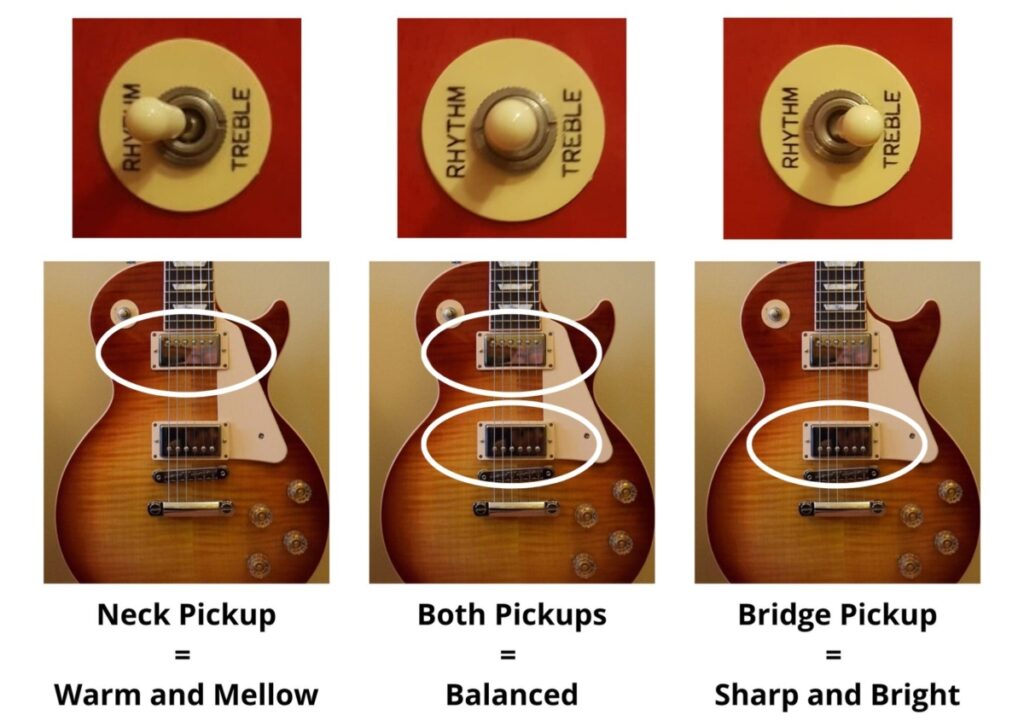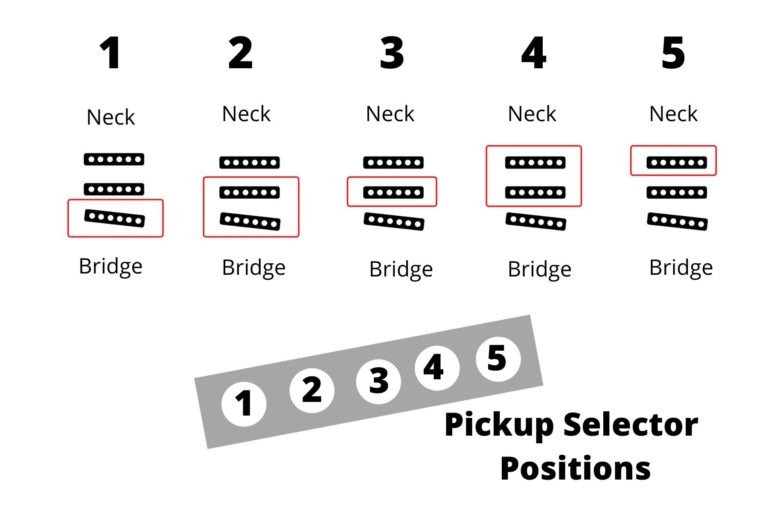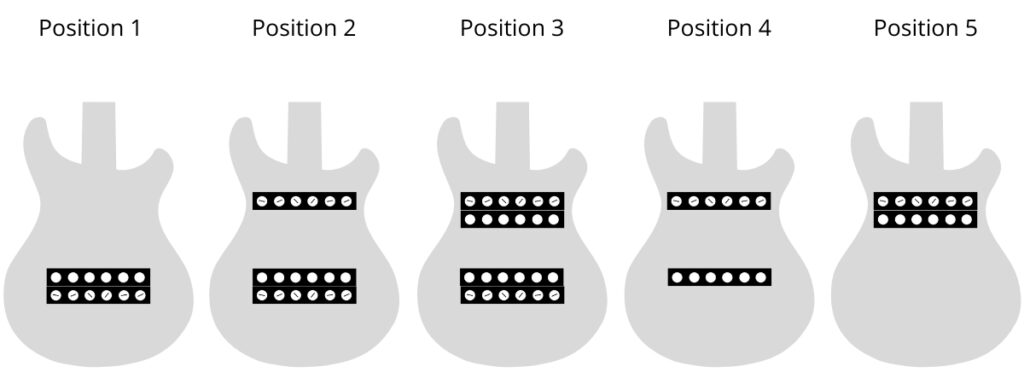Most electric guitars have at least two pickups so feature a pickup selector control to allow you to toggle between the different pickups to create different tones. The two most common types of pickup selector are the 3-way and 5-way switches which are found on a range of popular guitars including the Stratocaster. In this article, I’ll compare the pros and cons of each type so you can decide which to choose.
The Quick Answer
A 5-way pickup selector offers the most functionality from the electric guitar’s controls as it gives you more tonal options compared to a 3-way pickup selector. However, a 3-way selector makes it easier to switch positions more quickly and accurately compare to a 5-way switch.

Three-Way Pickup Selectors
The 3-way pickup selector is the most common option available and is seen on pretty much every electric guitar with two pickups. This type of selector allows you to activate the following pickup combinations:
- Position 1: bridge pickup only (sounds the brightest)
- Position 2: bridge and neck pickup together (most balanced)
- Position 3: neck pickup only (sounds the warmest)
The pickup selector allows you to achieve different tones with the flick of a switch by activating different pickups. In most guitars, the bridge pickup sounds the brightest whilst the neck pickup sounds the warmest due to the difference in position and the way the pickups are wound and the materials they are made from.

Check out this comparison between neck and bridge pickups to learn more about the differences and which is best to use when.
The most popular guitars which feature a 3-way pickup selector are the Gibson Les Paul, Gibson SG and Fender Telecaster. These guitars all have two pickups which allows you to activate them either in isolation, or together.
You can also find 3-way selectors on guitars with 3 pickups which allows you to isolate each pickup individually, but does not allow you to active more than one pickup at a time. An example of this is the 3 pickup Gibson SG.
The advantage of a 3-way pickup selector is that it is very easy to operate when you are playing a song. With there only being three positions, it’s very easy to tell which position you are in at all times, and switch quickly between them in a precise manner.
This is useful if you’re switching between tones mid-song, for example if you want to activate the neck pickup for rhythm sections and the bridge pickup for solos and lead playing to give the tone more brightness and allow it to cut through the mix more without adjusting your amplifier or using any effects pedals.
Five-Way Pickup Selectors
The 5-way pickup selector is most commonly seen on the Stratocaster electric guitar. Pretty much every Strat has a 5-way pickup selector except for the entry-level Squier Bullet Stratocaster which features a more basic 3-way pickup selector.
The Stratocaster has 3 pickups, one located in the bridge position, one in the middle and one in the neck. If the Strat just had a 3-way pickup selector, you’d only be able to activate each pickup individually. That’s why most Strats have a 5-way selector which allows you to activate two pickups at a time.
Here are what the positions of a 5-way pickup selector on a Strat do:
- Position 1: bridge pickup only
- Position 2: bridge pickup and middle pickup
- Position 3: middle pickup only
- Position 4: middle and neck pickup
- Position 5: neck pickup only
The 5-way selector gives you much more functionality to achieve different tones without adjusting your amp.
The only real disadvantage is that it is harder to control when you’re mid-song. For example, if you wanted to switch from position 1 to 3, you need to be more precise to make sure you don’t accidentally put it in positions 2 or 4 instead, since they are located very close together.

Guitars with 3 pickups will almost always follow the position sequence described above if they have a 5-way selector, however guitars with 2 pickups can still have a 5-way pickup selector. This is rarely seen on guitars with two single coil pickups, but it can be seen on guitars with two humbucker pickups.
Take the PRS Custom 24 as an example. This guitar has 2 humbuckers and a 5-way pickup selector. Here’s what the selector does:
- Position 1: bridge humbucker
- Position 2: bridge humbucker and neck single coil in parallel
- Position 3: both pickups
- Position 4: neck single coil and bridge single coil in parallel
- Position 5: neck humbucker
The pickup selector is able to do this because a humbucker essentially is two single coils arranged in opposite directions, so the selector is able to isolate just one of these coils at a time.

Can You Change the Number of Pickup Selection Positions?
So what if you want to switch from a 3-way to a 5-way pickup selector or vice-versa, is it possible. The good news is that it definitely is.
It is possible to switch from a 3-way to a 5-way pickup selector or from a 5-way to a 3-way selector by re-wiring the pickups and installing a new switch. If you are unsure how to do this then you can take your guitar to a technician to make the adjustments.
Here are some more articles you might find useful:

I your belief, what do you feel is the best setting for the 5 pick up selection with three pick ups. Is it 1, 2, 3, 4 or 5. I understand there can be personal preferences, but just in general what position produces the highest quality sound.
The article was exactly what I was needing to help understand the three pick up guitar and the settings. I do have a three pick up guitar with the five setting, however I had no ideal how to configure the sound and what each click of the setting had to offer. I thank you for this artical.